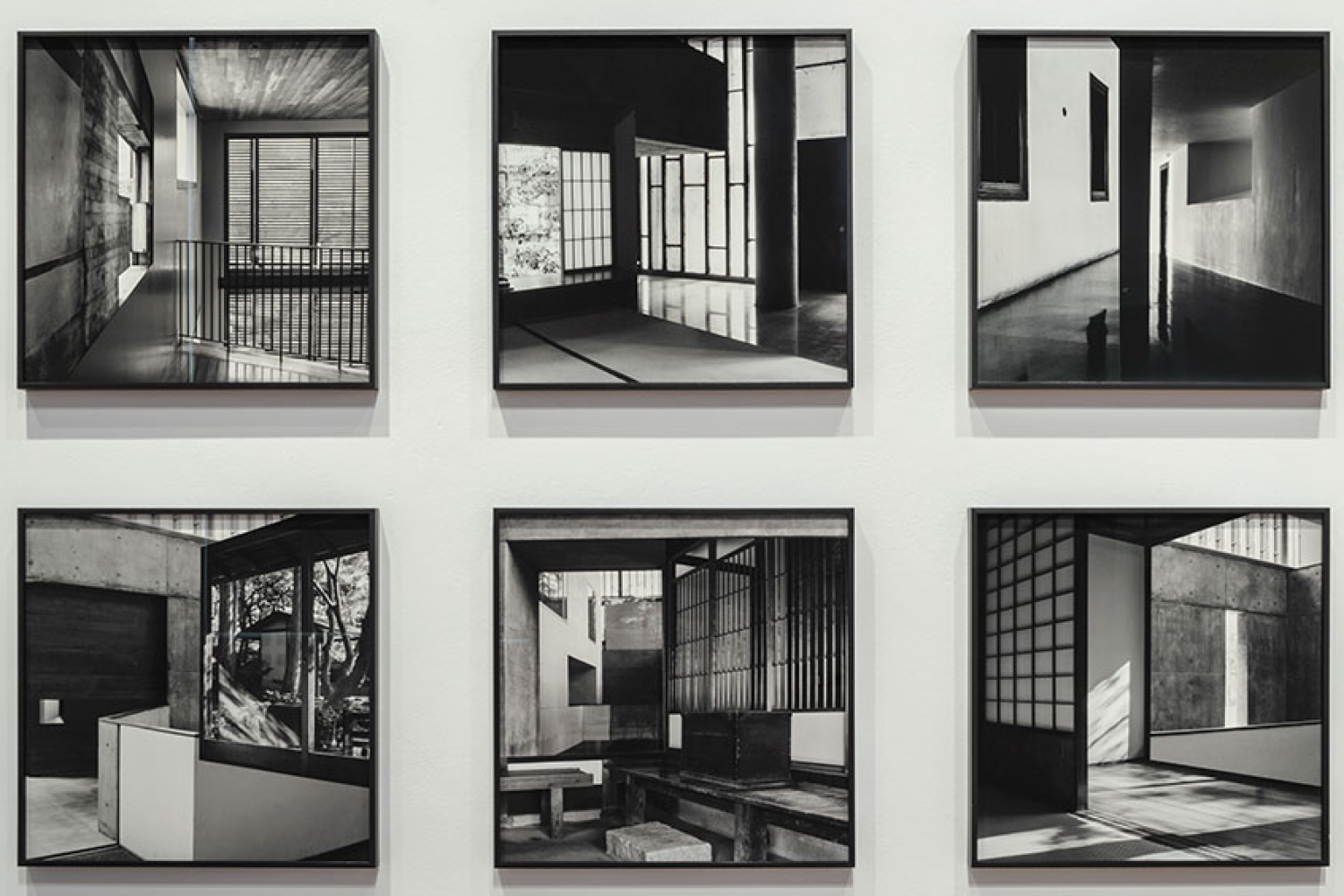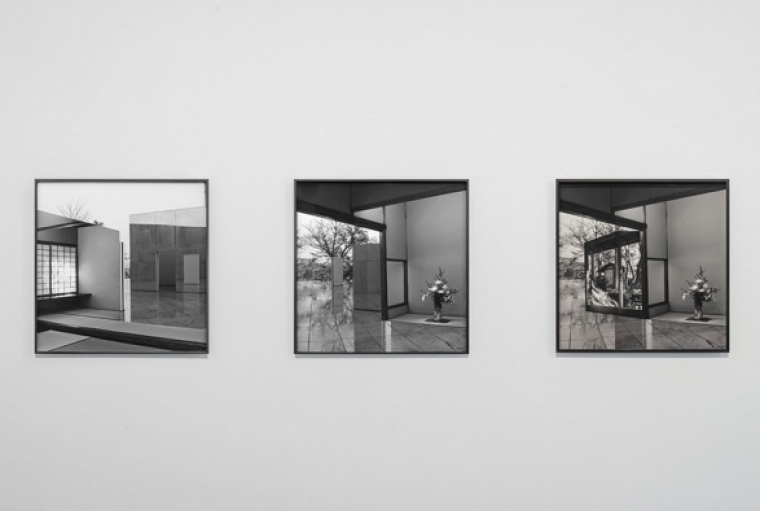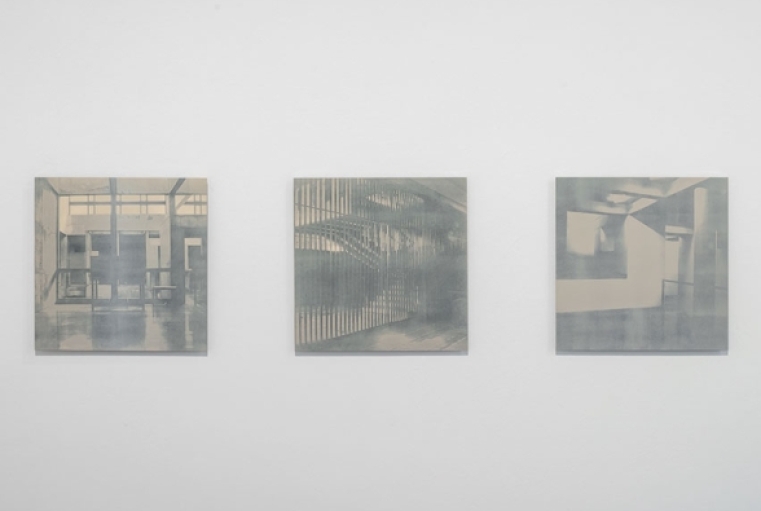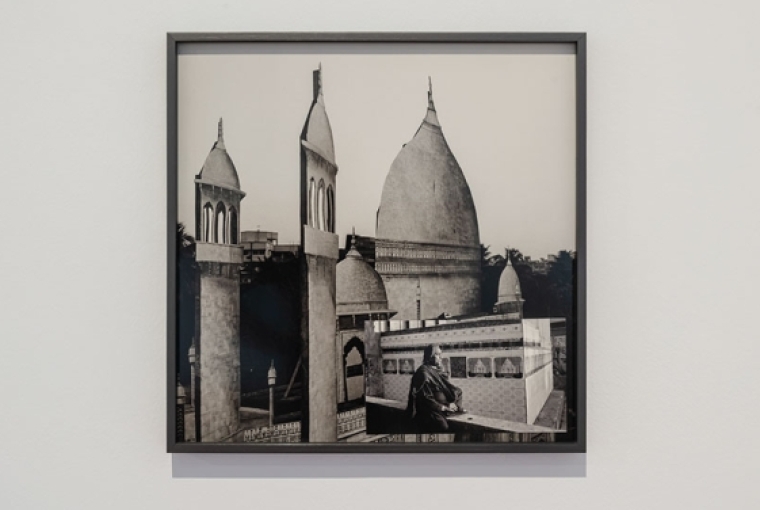
Architectural Montages

Architectural Montages
“Art is in its dissemination,” says Dayanita Singh. A master of turning books into exhibitions, the artist now turns her skill to disseminating her own exhibition.
Dancing with my Camera, Singh’s retrospective which was on tour in Europe 2022–2024 has inspired her to go further and create a series of interconnected shows in different Indian cities, adding something new and specific at each venue. As they progress these exhibitions are intended to change in form as well as in the images they display, mirroring the artist’s museum structures.
The exhibition began on 21 November 2024, when an extract from Dancing with my Camera will open in Mumbai. The tour is marked by other important dates: 22 November (Jaipur), 6 December (Kolkata), 11 January, 2025 (Kolkata), 1 March, 2025 (Ahmedabad), 6 March (Vadodara). On each of these dates, Singh will expand upon her approach to exhibition making by continuing the dissemination, drawing upon Stephanie Rosenthal’s original curatorial concept, which lent itself to iterative modes of activation.

Architectural Montages
The first stop will be the Jehangir Nicholson Art Foundation in Mumbai, where Photo Lies will bring together works that make apparent the deception in photography. Here, a suite of museums are presented empty, with the bare structure offering a new architecture for the space the exhibition inhabits. A key idea that Singh employs to highlight this altering of space is the “montage”, where the artist cuts up her own images and recombines them to make analogue compositions. From her architectural montages, to her montages of her long-time friend Mona Ahmed, Singh continually disrupts the viewer’s expectation of what an image is meant to be. Elsewhere in the exhibition, she paints over her photographs to create ghosts of her images. Finally, she constructs contact sheets to curate her own version of the history of modern architecture.

Painted Photos
The next day, Singh will show “Time Measures” at the newly launched Jaipur Centre for Art, a key work to emerge from Singh’s long-standing interest in the paper archive. Singh discovered these particular bundles of red fabric-wrapped documents in an archive in India. Over the years the cloth of these bundles faded. The knots that hold the objects together, in combination with the forms and faded colours, give them tangible personalities and turn each image into a singular portrait.
Simultaneous to the JNAF exhibition in Mumbai, Singh’s dissemination will begin at the Bengal Biennale in Kolkata. For this edition of her exhibition, called “Museum of Tanpura”, she extracts performance-based work from Dancing with my Camera. Here, Singh’s tributes to the musical history of the city that she spent her early years as an artist make an appearance. The first among these is the “Zakir Hussain Maquette”, a facsimile of the book Singh made as a student. The book will itself be the exhibition on the wall, together with new structures to house her accordion-fold book “Kishori Tai”, photographs from the “Musician’s Bus” series, as well as a pillar that features photographs of the late Rashid Khan. Singh takes inspiration from the eponymous musician’s bus from the 1980s – disseminating art across the country. Reluctant to depart from her dream location at the Indian Museum, Singh will add works and move the show into the corridors of the museum for the subsequent three months – a “Pillar of Pandals”, a “Sari Museum” and an “Indian Museum Pillar” will be added.

Mona Montage (Mona and Taj Mahal)
Following from the JNAF exhibition, Singh’s retrospective will split further into two. At Gallery White in Vadodara, the celebration of Mona will continue with “Myself Mona Ahmed” and the previously empty “Museum of Dance”, this time replete with images. Showing alongside will be the “Mona Study Table”, “Mona Montages” and a video of Mona reciting poetry. On its journey from Mumbai to Vadodara, the exhibition will have transformed from an ode to architecture into an ode to friendship.
Meanwhile, another extract will have opened at Ahmedabad’s Kanoria Centre for Arts, an institution set uniquely in its relation to her practice amidst the grounds of the CEPT School of Architecture and designed by Singh’s friend and collaborator, the late BV Doshi. At this edition, titled Photo Architecture, Singh will show her “Architectural Montages”, “Box 507” and her pillars of three architects (“Bawa Rocks”, “Corbu Pillar”, “BV Stairs”). Displayed alongside these, and showing for the first time, will be a video of Doshi talking about the photographs that Singh made in Kamala House, his home in Ahmedabad.
Excavating, constructing, de-constructing and re-constructing have always been at the heart of Dayanita Singh’s practice. By disseminating her exhibition, the artist continues to build upon this foundational pillar, marking the next step in her pursuit to make form and meaning anew, potentially endlessly.
Words Platform Desk
Date 25.11.2024